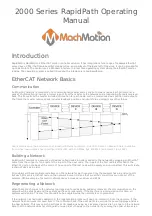
AVENAR panel
Planning | en
35
Bosch Sicherheitssysteme GmbH
System manual
2022-07 | 5.0 | F.01U.378.910
3.7
Achievable cable length with LSN 0300 A
The usable cable length depends essentially on the resistance of the cable and the quantity
and current consumption of the network elements. The way in which the elements are
distributed locally on the bus also makes a difference.
The possible cable length can be estimated using the formula below. This formula is also used
in the Safety Systems Designer and is based on the critical application situation where all
network elements are concentrated at the end of the bus line. The calculated cable lengths
are therefore on the conservative side. The diagrams on
Using the Diagram for LSN classic,
page 35 and Using the Diagram for LSN classic, page 35 can be used to make a quick
estimate.
The following applies:
L = cable length to be calculated in [m]
U
0
= bus voltage at the connection terminals = 30 volt
U
End
= bus end voltage = 15 volt (must not fall below this limit!)
q = cable cross section = 0.503 mm
2
(for cable Ø 0.8 mm)
n
E
= number of elements
ρ = specific resistance of copper = 0.0178 Ω mm
2
/m)
R
FET
= FET resistance = 0.7 Ω (LSN classic) or 0.35 Ω (LSN improved),
I
NE
= average current consumption of elements in [A]
I
trans
= transmission current = 0.012 A
I
flash
= flash current = 0.018 A
Note that the sum of non-isolated cables must not exceed the limit of 500 m. The limit of
500 m applies to:
–
The lines on the inputs of the following modules: FLM-420-RHV, FLM-420-I2 , FLM-420-
I8R1-S, FLM-420-O8I2-S, FLM-420-O1I1, FLM-420-RLE-S
–
The NAC line of the FLM-420-NAC module
–
The lines to remote indicators: FAA-420-RI-DIN, FAA-420-RI-ROW
The limit of 500 m non-isolated cables doesn't count for the conventional lines of the
FLM-420/4‑CON and the lines connected to the relay contacts and open collector outputs.
Note that the maximum cable length must not exceed 1600 m.
Using the Diagram for LSN classic
FET resistance = 0.7 Ω, fire alarm cable with Ø 0.8 mm
Example 1:
You want to know the maximum cable length for a given number of network elements and a
given current consumption (n
E
= 50, I
NE
= 3 mA). On the X axis, go vertically up at 50 until you
reach the 3 mA curve. Then, from the point of intersection go horizontally to the left to the Y
axis and read off the maximum achievable cable length. In this example it is 840 m.
Example 2:
You want to know the maximum number of network elements for a given cable length and an
average current consumption of the network elements (L = 1000 m, I
NE
= 20 mA). Starting from
the Y axis at 1000, go horizontally across to the right as far as the 20 mA curve and then from
the point of intersection vertically down to the X axis. Read off the maximum number of
network elements, in this example it is 8.
















































